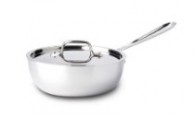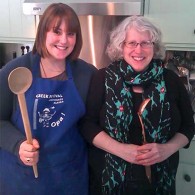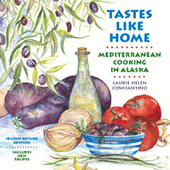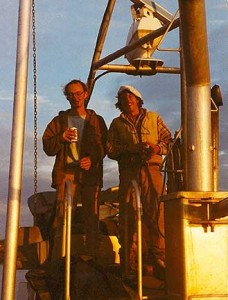 Commercial fishing drew me and my friends to pre-pipeline Alaska in the early 1970s. We grew up on Puget Sound, and left without looking back. In those years, we worked in canneries, hoping for lots of overtime, or on boats for a percentage of the catch, hoping our captains would be on the fish.
Commercial fishing drew me and my friends to pre-pipeline Alaska in the early 1970s. We grew up on Puget Sound, and left without looking back. In those years, we worked in canneries, hoping for lots of overtime, or on boats for a percentage of the catch, hoping our captains would be on the fish.
It’s been 35 years since I was on a fishing boat, but if I shut my eyes, I remember it as if it were yesterday: the feel of a boat rolling in waves, the pull of a drift net dropping into water, the excitement of fish hitting a net, the sound of splashing salmon and hydraulics, the struggle of picking tangled fish out of a net.
When I was young, most women on fishing boats were hired as boat cooks and disparagingly referred to as “5%ers,” referring to their 5% crew share, usually smaller than what male deckhands received. Of course, when nets were full, 5%ers were expected to pick fish alongside deckhands; their tasks were rarely limited to cooking.
In the last few decades, times have changed for women in Alaska’s fishing industry, as they have in most US work places. Now, women successfully run their own fishing boats from the Bering Sea to Southeast Alaska.
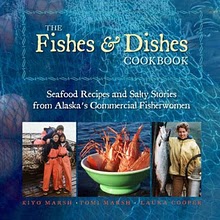 Tomi Marsh, Kiyo Marsh, and Laura Cooper are among those successful women. Collectively, the Marshes and Cooper, authors of The Fishes & Dishes Cookbook: Seafood Recipes and Salty Stories from Alaska’s Commercial Fisherwomen (Epicenter Press 2010), have worked as “captain and crew, engineer, deckhand and cook.” Their experiences criss-cross Alaska: “from crab fishing on the Bering Sea, to long-lining for turbot and black cod out on the Aleutian Chain, to collecting and delivering salmon from fishing boats to the canneries in Southeast Alaska and many points and fisheries in between.”
Tomi Marsh, Kiyo Marsh, and Laura Cooper are among those successful women. Collectively, the Marshes and Cooper, authors of The Fishes & Dishes Cookbook: Seafood Recipes and Salty Stories from Alaska’s Commercial Fisherwomen (Epicenter Press 2010), have worked as “captain and crew, engineer, deckhand and cook.” Their experiences criss-cross Alaska: “from crab fishing on the Bering Sea, to long-lining for turbot and black cod out on the Aleutian Chain, to collecting and delivering salmon from fishing boats to the canneries in Southeast Alaska and many points and fisheries in between.”
Fishes & Dishes pairs fascinating personal stories from many different women in the Alaska fishing industry with 80 recipes, most using Alaska seafood. The book contains helpful how-to information for dealing with Alaska seafood, from shucking oysters to filleting fish (though I found myself wishing for photo-illustrations in this section). Fishes & Dishes is beautifully designed, with lovely color pictures of Alaska and its seafood. Photographs of the recipes are not, however, included.
The personal stories are classic: Tomi Marsh shopped for her boat in Brooklyn at a time when she “couldn’t tell a water pump from an oil cooler, let alone understand the intricacies of electricity or hydraulics.” Kiyo Marsh learned that cooking in “rough seas called for a series of bungee cords strapped around and over pots to prevent hours of food prep from ending up in the garbage.” Anyone interested in the reality of Alaska’s fishing industry will enjoy The Fishes & Dishes Cookbook, even if they never cook a single recipe.
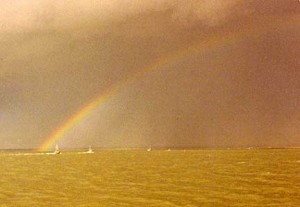
Cook Inlet Fishing Grounds 1976
The recipes, 71 for seafood and 9 for drinks (some things haven’t changed in the fishing industry), are full of interesting flavor combinations. Peppers, herbs, and garlic are used frequently, but not overpoweringly. One-third of the recipes include Asian seasonings. Other recipes reflect Spanish, Italian, and French influences. Despite their wide-ranging palates, the authors of The Fishes & Dishes Cookbook have written recipes, for the most part, using readily available supermarket ingredients.
I tested recipes for:
- Boiled Jade Dumplings with Green Curry Sauce (p. 34-5) (recipe below): Jade Dumplings are fiddly to make, so you need to leave yourself plenty of time, but they’re delicious and worth the effort. When boiled and served with Green Curry Sauce, Jade Dumplings are so gorgeous, they’re suitable for entertaining. Green Curry Sauce was wonderful, though the seasoning may need adjusting; we wanted more green curry paste and fish sauce than called for in the recipe.
- Pan-Fried Jade Dumplings with Citrus Ponzu Sauce (p. 34-5): Having tasted (1) above, pan-fried Jade Dumplings weren’t nearly as good as boiled. Making something this labor intensive, I want it to be the best, and pan-fried isn’t the best rendition. We didn’t like the Citrus Ponzu Sauce at all, thought it did nothing for the dumplings, and wouldn’t make it again..
- Octopus and Roasted Red Pepper Salad (p. 64): The salad contains roasted red peppers, cooked white beans, and diced octopus in a dressing of olive oil, lime juice, garlic, cilantro, parsley, red onion, and Serrano chiles. The salad’s concept was terrific, but the dressing was bland and under-seasoned. All the seasoning components in the dressing had to be doubled or quadrupled. As modified, the salad was wonderful and I’ll make this recipe again.
- Thai Clam Chowder (p. 69): The soup contains bacon, lemongrass, ginger, clam juice, coconut milk, fish sauce, brown sugar, green curry paste, canned clams, lime juice. Its a great idea for making a dairy free chowder; and is an excellent way to use up leftover clams and clam broth. The flavors are quite similar to the Jade Dumpling green curry sauce recipe. One again, the soup is under-seasoned if you follow the recipe exactly. However, if you increase the fish sauce and curry paste (I also added shallots), the soup is fantastic. It’s quick, easy, and can be made with pantry staples. I’ll definitely make it again, with “planned leftovers” the next time I serve steamed clams.
- Salt and Pepper Shrimp with Jalapeños (p.95) (recipe below): The shrimp were crispy, juicy, and full of flavor; Steven pronounced them the best fried shrimp he’d ever eaten. Even better, the recipe is simple and can be made in the 20 minutes it takes to cook rice. I used less oil to fry the shrimp than called for in the recipe, but other than that followed it faithfully. I’ll definitely make this again.
Overall, The Fishes & Dishes Cookbook is worth buying. The stories from the fishing grounds are interesting and the recipes for seafood, something we all should eat more frequently, are good. Keep in mind when using this cookbook that, as written, the recipes may be under-seasoned for those who like robust flavors. With that caveat, the recipes work well and produce good food. I’m looking forward to trying more of them and to remaking the ones I’ve tried. There’s no higher compliment.
“After seeing first-hand the life of a Southeast fisherwoman, the risks, the lack of sleep, the stormy seas, the camaraderie, the dedication … I know I will always buy fresh, wild Alaskan seafood. When I take that first bite, I can picture the pristine waters, mountains, feeling alive, bears, Extratuf boots, Grundéns rain gear, huge dock lines, adventure, sunsets, big seas, dolphins playing in my wake, a lone fisherman on the horizon, and a true feeling of freedom.”
—Kacy Hubbard-Patton, in The Fishes & Dishes Cookbook
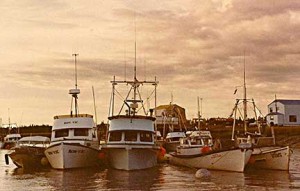
Kasilof 1976



